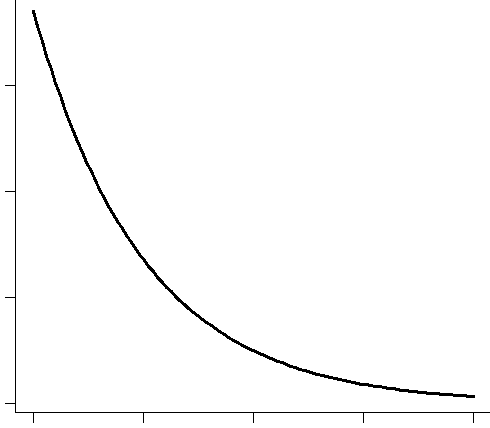
Compound growth
Compound interest is an example of exponential growth because it increases by a power or index which, when we graph it, gives it this kind of shape:

The formula we use to solve questions involving exponential growth is the same as the compound interest formula:
$A=P\left(1+r\right)^n$A=P(1+r)n
Practice question
Question 1
A country's population of $18$18 million people is expected to increase by $2.1%$2.1% p.a. over the next $38$38 years .
Calculate the expected population in $38$38 years time.
Round your answer to the nearest whole number.
Compound decay
This is basically the opposite of exponential growth, where things decrease in value at an exponential rate. The graphs look something like this:
The formula we use to solve questions involving exponential decay is the same as the depreciation formula:
$A=P\left(1-r\right)^n$A=P(1−r)n
Practice question
Question 2
The area covered by an ice shelf was measured over some warmer months. At the beginning of the first month the ice shelf was spread over an area of $1437$1437 square kilometres, and it was found that this area decreased by $2%$2% each month over the recording period.
What area was covered by the ice shelf after $13$13 months of recording? Give your answer to the nearest square kilometre.
Using the rounded value from the previous part, what was the loss in the ice shelf's area over $13$13 months?
